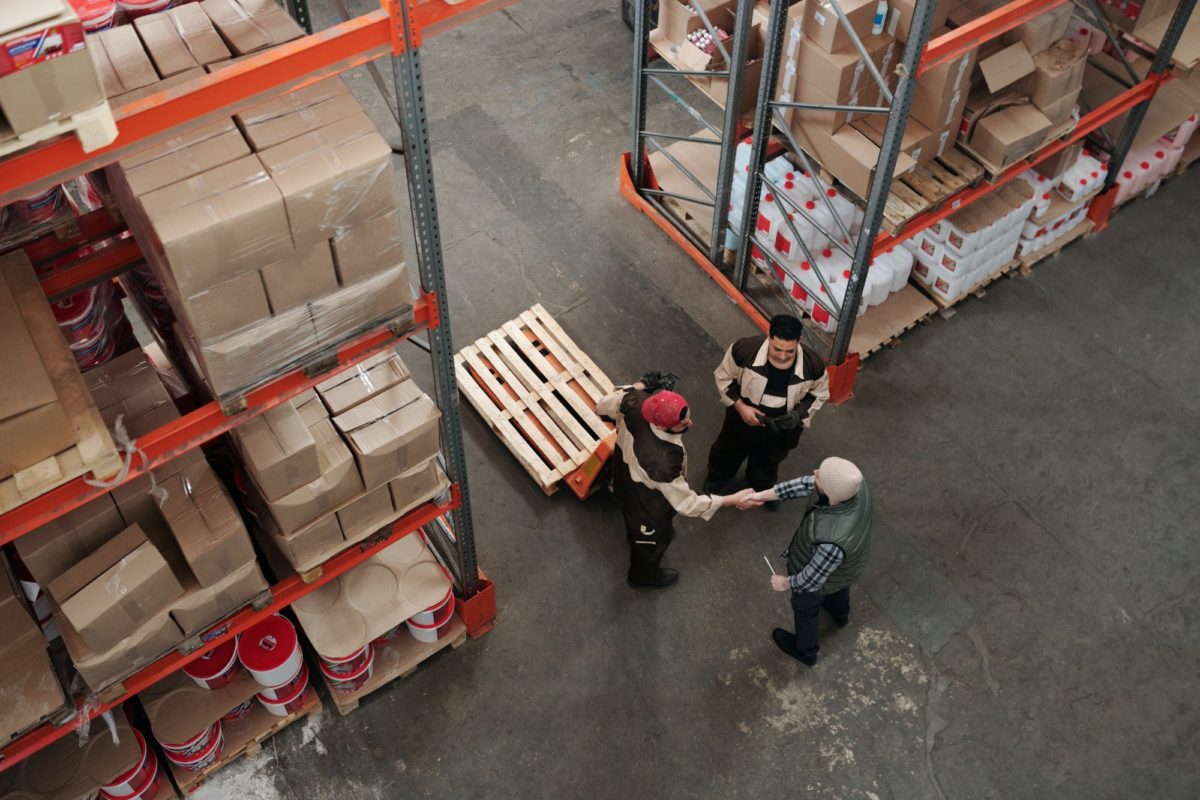Wholesale Barcode Inventory Control tips
If you are doing wholesale and/or manufacturing, barcode inventory control is a great way to keep track of your inventory and stock levels in an efficient and precise manner.
In this blog post, we are going to share with you some tips that you can use to streamline barcode inventory control for your wholesale business. Specifically, we are going to cover the following topics:
- What are barcodes?
- What is barcode inventory control?
- The benefits of barcode inventory control in wholesale
- Tips for barcode control
What are barcodes?
A barcode is a visual representation of data that can be read by a scanner and contains information about the product. This product information is, for example, product size, product type, and manufacturer.
Just looking at a barcode will make little sense. However, using a barcode scanner, you will be able to “extract” all of the product data and information.
There a two main types of barcodes: 1D barcodes and 2D barcodes.
1D Barcodes
1D barcodes are one-dimensional. These are the traditional barcodes that most people think of when hearing the word ‘barcode’.
They are characterized by vertical black lines with blank spaces in between the lines. The unique pattern of vertical lines and spaces allows a scanner to identify the product and product information.
2D Barcodes
Two-dimensional barcodes are usually in the form of a square and consist of dots and shapes that store information. Compared to 1D barcodes, 2D can hold up more information than the traditional 1D barcodes while requiring less physical space.
For that reason, 2D barcodes are becoming increasingly popular to use for inventory control management.
In the image below, you can see an example of a 2D barcode.

What is barcode inventory control?
Barcodes – especially 2D barcodes – have many purposes. But for a wholesale or manufacturing company, they are mainly used for inventory control.
So what is barcode inventory control?
Well, it is essentially utilizing the power of barcodes to keep track of your inventory.
By adding barcodes to your products, you can scan them whenever you need to update your inventory. This update is relevant when you sell and ship your products, when you receive or manufacture new units, or when you are doing a warehouse stock status.
Instead of manually pointing and counting all of your products in your warehouse, you can use scanners to scan the barcode on each individual product for a quick and precise summation.
If you are a new wholesale company just getting started, it might seem a bit excessive to use a barcode inventory management system. However, as your wholesale business grows, the need for an efficient inventory control system increases drastically. And even if you feel you can still handle supervising your inventory manually, there are still plenty of benefits of using barcodes to keep track of stock levels – irrespective of company size.
The benefits of barcode inventory control in wholesale
As mentioned, there are multiple benefits of using barcodes to control your inventory and stock. In this section, we are going to share with you the two most common ones.
More accurate inventory control
The main benefit of barcode inventory control is more accurate inventory and stock management.
A barcode can pass on an endless amount of information. Consequently, it reduces human error and overall diminishes incorrect and lost data.
Using manual inventory control, your company is at a higher risk of miscalculating inventory or losing track of the expiry dates of the items you have in stock.

Time-saving aspect
As your business grows, you are going to appreciate the barcode inventory system. When your business and inventory are growing, this system will make it much quicker to keep track.
Being able to scan your products and keep track of your stock levels digitally is a real timesaver. Not only is the actual process of doing inventory control much quicker, but you will also save time not having to deal with as many errors.
Tips for using barcodes
After having explained the concept of barcodes, what barcode inventory control is, and the benefits of using barcodes for inventory management, we have finally arrived at the tips for optimizing your use of barcodes for inventory control.
There are a lot of considerations to make to ensure efficient use of barcodes, and covering all of them in-depth would make for a long read. Therefore we are keeping it short and share with you 5 tips:
- Barcode color and contrast
- Quiet zone
- Placement and surface
- Industry standards
- Integrations
Color and contrast
The standard barcode is black and white. But they actually come in a variety of combinations; Green on white, black on orange, blue on red, etc.
While a combination of green and black might be your favorite color, it might not necessarily make a good combination for a barcode. In fact, choosing a bad color combination can make it unscannable.
Also, when deciding on colors, taking the color of the product/packaging into consideration is a good idea.
For a more in-depth description of the different barcode colors, you can read this quick guide.
Quiet zone
The quiet zone is the white area surrounding the barcode. Just like the color and contrast, the ‘quiet zone’ is important to the scannability. If the quiet zone is too small or gets disturbed, the scanner might not be able to read the barcode correctly.
Placement and surface
Not only do you have to consider the appearance of the barcode, but you also need to think about the placement.
First of all, you need to place the barcode so that it is easily accessible for those that need to scan it. Otherwise, it can lead to a lot of frustration in the warehouse.
But you should also consider the surface that you place the barcode. The optimal surface is matte, while glossy surfaces can make it difficult to read for barcode scanners.

Follow industry standards
Some industries have certain standards in place when it comes to barcodes. So even if there – in general – is some wiggle room in terms of colors and placement, this might not be the case in your industry.
So to ensure your products smoothly travel through the supply chain, it’s a good idea to check for potential regulations related to quality, size, and color.
Integrations
To reap the maximum benefit of your barcode inventory system, you need to make sure that it integrates with your other business software systems.
One of the main benefits of using a digital solution for your inventory control is to avoid tedious manual work. And the potential errors that follow.
If your barcode inventory system does not integrate, eventually, you will have to manually export the data to other systems.
Conclusion
If you are currently keeping track of your inventory manually, setting up barcode inventory control can seem like a big task. And while it does take some effort, it is definitely worth it in the long run.
For a wholesale company, digitizing your inventory control is as important as digitizing your wholesale transactions. As your business is growing, it will prove essential in the organization of any business and offers a cost-effective way to keep an efficient control of your stock.
All in all, using barcode inventory control will ensure better inventory control, better insights on warehouse and stock, and make you able to make informed decisions faster.